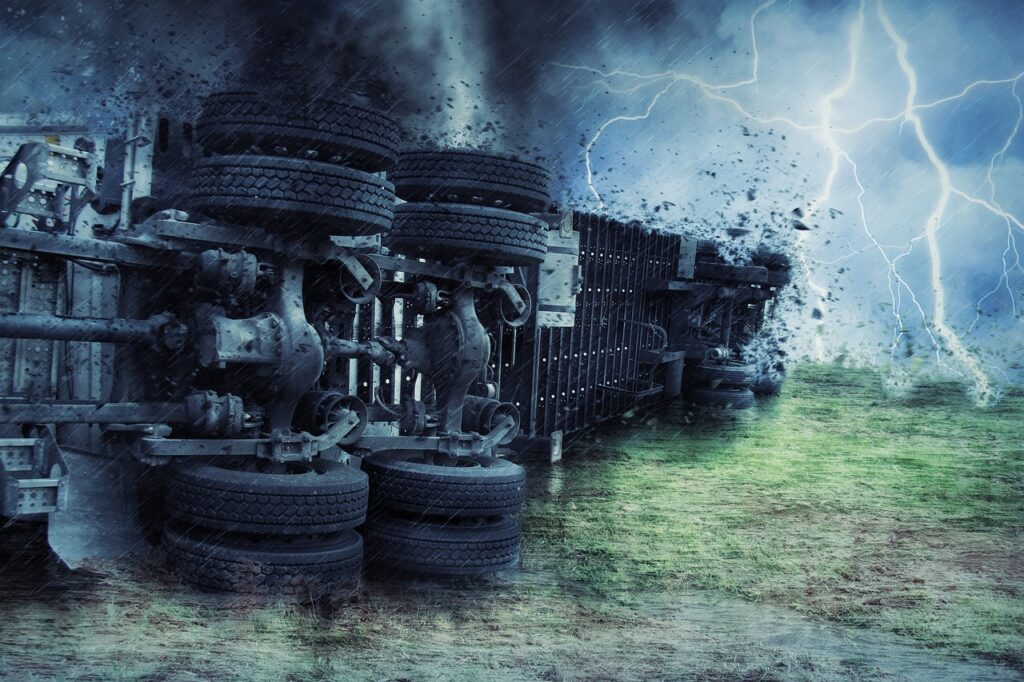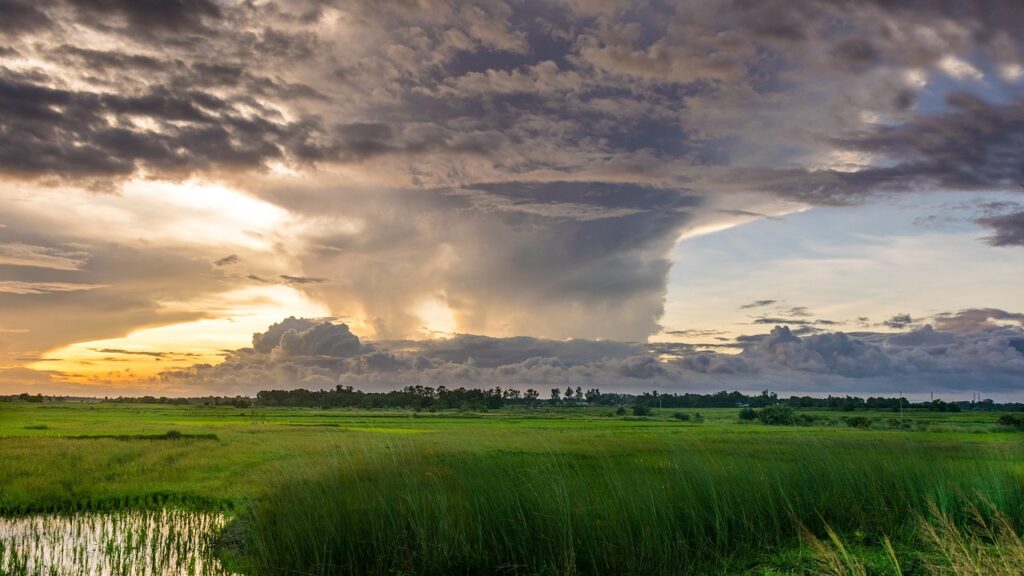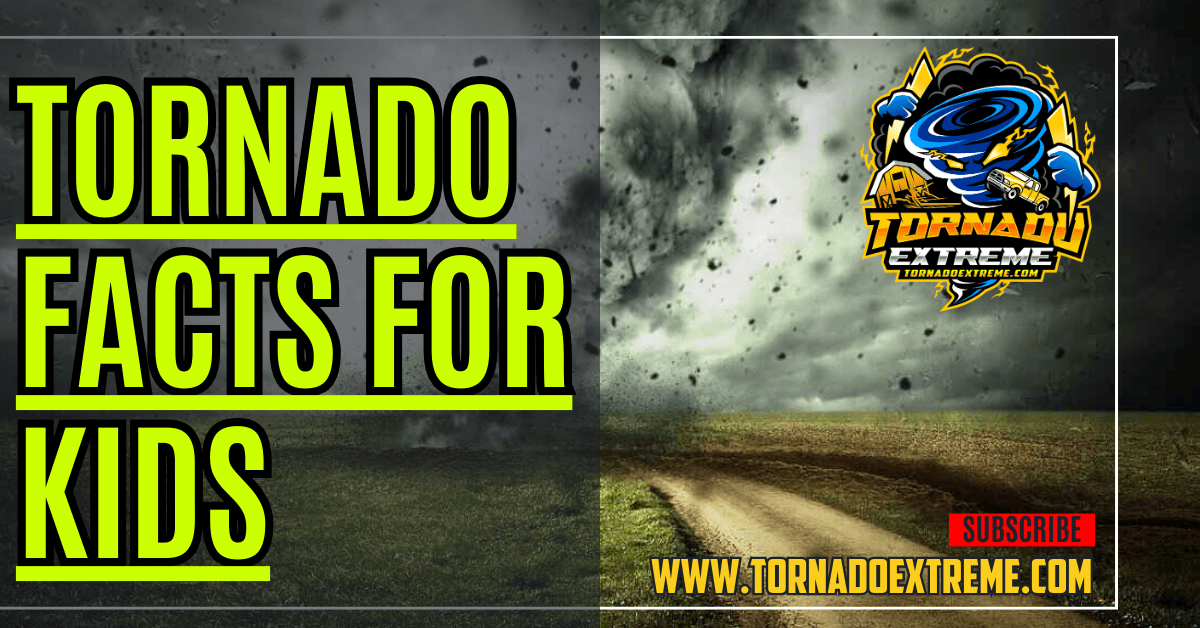Tornado Facts For Kids – Introduction to tornadoes
Tornadoes are super cool and super terrifying all at the same time. They’ve got a way of capturing both the young and old with their sheer power! In this article we’ll try to unwrap the mystery that is tornadoes so that your child may better understand them: What they are, how they’re formed, and some fun facts along the way.
The following facts about tornadoes have been carefully put together for your young ones who just can’t get enough of these massive storms. Children have always been infatuated with weather and storms, so why not lean into that? We know how curious they can be when it comes to things like this. So whether it’s for a school project or you just want to keep them entertained, these intriguing tidbits should be more than enough!
What is a tornado?
A tornado forms when powerful upwards winds collide with thick cumulonimbus clouds. Being able to easily spot one of these things is already crazy in itself as no two tornadoes look exactly alike. But what you’re looking for is a rapidly rotating column of air touching both ends of Earth’s surface and the cloud above you. Sometimes there will also be a visible condensation funnel from the cloud base down to where its touching Earth.
These guys come in all sorts of shapes and sizes too! It could either look like a really long piece of rope or just be a short stout vortex around trees. No matter how it looks though, always remember that they’re dangerous forces capable of bringing buildings down and tearing up entire communities!

Tornado History and Basic Facts
Where does the word “tornado” come from?
Good question! There’s actually a couple theories on where this word came from but one says its Spanish origin “tronar” meaning “to thunder.” The noun form might have been coined by spelling mistakes over time.
See also: Which State Has the Most Tornadoes and Why It Matters
What continents do tornadoes happen on?
It seems once upon a time, tornadoes were able to touch down on a lot of different continents. Some even say they ravaged six out of seven! They hit North America, South America, Europe, Asia, Africa, and Australia. But there is one that they haven’t hit yet… Antarctica! It makes sense though as this icy wasteland isn’t exactly bustling with human life.
In which US state do the most tornadoes occur?
In the United States, specifically in Texas, there are 126 tornadoes on average each year. That’s a lot of twisters for one state! The amount of tornadoes in Texas is something worth noting, as it’s significantly higher than most others. This high frequency is crucial when discussing severe weather patterns in the U.S.
Oklahoma shares its border with Texas and consistently witnesses a significant number of tornadoes each year as well. Oklahoma generally records around 52 twisters annually. You can clearly tell that the United States has a diverse range of weather by looking at how many storms happen every year.
In conclusion, the country has an insane number of these intense natural disasters. On average, 1200 reported tornadoes occur annually in America. That’s more than any other country and far exceeds what any normal person would think could even be possible. So what makes this nation so special? What unique conditions does it have that causes this many deadly storms to form?
See also: What Is a Multi Vortex Tornado? A Comprehensive Exploration
Where did the first ever recorded tornado take place?
The first recorded tornado in the world touched down on July 5, 1643 in Massachusetts Bay Colony — a place that is now a part of the United States. But what was it like? Can you imagine seeing one for the first time? The whirlwind must have been absolutely horrifying to settlers who were experiencing them for the very first time. However, despite its ferocity and undeniable terror, this event actually led to great strides in meteorology and extreme weather knowledge around the planet.
Although lots of folks couldn’t scrounge up an image of their head as to what it must’ve been like back then, this thing would have been absolutely horrifying. Photographs and videos don’t do modern day tornadoes justice, so how could people from hundreds of years ago prepare themselves or even know what to expect? Without any way to know what was coming or even an ounce of preparation, those early settlers must have felt incredibly helpless when they saw those violent winds whirling through their communities.
This also happened at a time where meteorology wasn’t even beginning to be understood yet (and we’re still learning about it today). So naturally, people were terrified of things they weren’t able to predict or comprehend. But at least this served as a wakeup call for scientists everywhere. This was no minor inconvenience for settlers who had just built their lives here — and they certainly wouldn’t go about underestimating Mother Nature after this occurrence.
The study of extreme weather doesn’t seem like something we’d need technology and computers for — but look at where we are today. Although there is still progress to be made in our ability to predict and protect against dangerous natural events such as tornadoes, with every new discovery comes stronger protection against them.
Today’s better understanding has given us advanced technology that can detect incoming monstrosities before they wreak havoc on our homes and neighborhoods. And while there are always ways we could improve our warning systems or protection, we mustn’t forget where we began. Someone had to be the first to witness such a scary event and although we don’t wish for anyone to have to go through something like that, it has led us all here today.

What was the most destructive tornado ever?
2011 saw one of the most devastating natural disasters in American history. Throughout this year, a total of 360 separate tornadoes hit 21 states across various regions including north-eastern, midwestern and southern areas.
The destruction caused by all these twisters took three days to calculate because there were just so many things to tally up: $10.8 billion-worth-of-property-shattering things! With such astronomical numbers, it’s no wonder that this catastrophic event prompted a collective reflection on the importance of disaster preparedness and resilience.
Tornado Appearance and Behavior
Are tornadoes always grey?
No, each tornado has its own coloration. This is because the wind carries water, earth and debris that can have different colors. The presence of light also affects their appearance; however, a tornado does not emit light. But the debris it contains can reflect and scatter light in various ways, which produces a variety of colors. As a result, no two tornadoes are the same and each one has its own unique look.
See also: Green Sky Tornado: Why Does the Sky Turn Green?
Do all tornadoes happen over land?
Tornadoes are most likely to form over land rather than water, unlike hurricanes. However, waterspouts—a type of tornado—can develop on oceans and lakes or move from land to water. They form in thunderstorm clouds just as twisters do on land and they are accompanied by lightning and strong winds.
Is it true that some tornadoes spin clockwise?
The complexity of world’s tornado formation is shown with the swirling wind vortex took on many forms. Tornadoes can rotate either way depending where you are in the world. Researchers discovered that in the southern hemisphere these stunning weather events spin clockwise! This is opposite to what happens in the northern hemisphere where tornadoes tend to spin anti-clockwise. These rotation patterns add another layer of fascination to these awe-inspiring natural phenomena.
What’s inside a tornado?
If you’re standing at the core of a particular type of twister there would be calm air pressing down. But few instruments sent into a twister have survived long enough to measure those conditions
How long does a tornado last?
These tempestuous whirlwinds aren’t like clockwork — some only live for minutes while others rage on for hours. On average though, a single funnel cloud will touch down for about five minutes before dissipating again

The Power of Tornadoes
How strong is a tornado?
Tornadoes can be real powerhouses, with wind speeds ranging between 40 and 320 mph, as measured by the Enhanced Fujita Scale (EF Scale) or the original Fujita Scale (F-Scale). The rating scale ranges from 1 to 5, which estimates intensity.
It’s mind-blowing to fathom wind moving at a rate of 320mph. It’s natural to wonder what would happen to your body if you were exposed to that kind of force in such an event. In fact, back in the year of 1964. NASA decided it was time to put this presumption to bed and conducted an experiment where they took a look at what happens when the human body is thrown into violent winds. Surprisingly, the outcome wasn’t as bad as one would think. Our bodies have been found capable of resisting winds up to 357 mph – that’s even stronger than those produced by a tornado! But make no mistake – being able doesn’t mean comfortable or pleasant.
Can you protect yourself from a tornado?
There are multiple places in which you can take refuge in case there ever comes a time when you need them.
Residential buildings usually come with basements that are built for a reason – they’re safe and sturdy spaces. Public storm shelters are also available where communities come together during times like these and design protective areas intended specifically for high-speed winds and flying obstacles so citizens can find protection easier than ever before.
If you happen to live on rural lands then storm cellars might be your best bet since they’re unique structures designed for severe storms such as twisters. These underground structures are fortified spaces that will keep you safe during those extreme weather conditions. All options considered, there’s definitely something out there for everyone so that we can all stay safe during unpleasant times!
Is it possible to outrun a tornado in a car?
Yes, it is possible to escape from a tornado by just driving away. However, there are some things to note before you go ahead and give that adrenaline filled race a go. This strategy only works if the tornado is already in one spot and hasn’t made any sudden movements yet. If that’s the case then yes, driving away would definitely work.
But as soon as that twister begins its journey of destruction and starts inching closer towards you… all bets are off. Once a tornado starts moving through an area it gains speed at an alarming rate, sometimes reaching up to 320mph which makes it impossible for a vehicle to ever outrun it no matter how fast you were planning on going. The power behind these windstorms is truly breathtaking when you think about how powerless we’d be if we were ever facing their full force.
How do tornados form?
Tornadoes only spring into existence when the weather conditions are just right. They’re usually formed as a result of severe thunderstorms where cool, dry air smacks warm, moist air creating unstable conditions in our atmosphere. These conditions birth strong updrafts which eventually become rotating updrafts known as mesocyclones – these are the first steps of a developing tornado. And if everything aligns correctly then that’s when the fun begins and we see this monster touch down on Earth’s surface.
Some facts about Tornados for kids:
– With winds spinning at speeds of 300 mph, they have been found to be the fastest on Earth.
– It’s size can vary between several feet or over a mile wide.
– Roughly 1,200 tornadoes take place in America every year making us more prone to them than any other country in the world!
Tornadoes are no joke. They can go on for a few seconds or over an hour, but most only last for a few minutes.
The Fujita scale helps us measure the intensity of these twisters. Ratings go from F0 (weakest) to F5 (most destructive).
Historical Tornadoes
Some tornadoes in history have really made their mark on the world. In 1811, New Orleans saw one of these famous tornadoes when the city was hit by a massive twister that caused extensive damage. Arkansas holds the record for longest tornado track when it was struck by one of its own in 1925 — that’s where the “Tri-State Tornado” name comes from. A strong tornado in Dallas in 2019 left a trail of destruction in its wake and reminded people just how fierce these natural phenomena can be.
Tornado safety tips for kids
Children should understand the importance of tornado safety. Here are some precautions to take:
1. Pick a designated safe spot in your home that’s on the lowest level, like a basement or an interior room.
2. Keep away from windows and seek shelter under sturdy furniture.
3. If you’re outside, either go inside a sturdy building or lay flat in a low-lying area.
4. Listen to weather alerts and do what trusted adults tell you during a tornado watch.
Remember, your family’s safety is always most important during a tornado.
Tornadoes in different locations – New Orleans, Arkansas, and Dallas
Tornadoes in different locations – New Orleans, Arkansas, and Dallas
Different regions around the world have experienced their fair share of tornadoes. Let’s take a closer look at tornadoes in three specific locations:
New Orleans Tornado
In 1811, New Orleans was caught off guard when a tornado hit it early in the morning. The destruction was immense. Homes were destroyed and lives were lost as debris flew through the air at high speeds. This tragedy reminds us how important it is to be prepared and know about severe weather.
Arkansas Tornado
The Tri-State Tornado of 1925 traveled through Missouri, Illinois, and Arkansas for approximately 219 miles — earning its name. It claimed many lives along its long path of broken homes and downed trees. Experts soon began working on ways to warn people about incoming tornados because of this incident.
Dallas Tornado
A powerful tornado touched down in Dallas in October 2019, wreaking havoc as it moved through neighborhoods. Buildings gave way left and right as debris flew through the air faster than anyone could see it coming.. Such incidents remind us that nothing can stop Mother Nature from doing her thing whenever she wants.
The impact of tornadoes on communities
Communities are never quite ready for the aftermath of strong tornados because they deal massive blows—destroying homes, damaging infrastructure, tearing up lives…But when things start going south, neighbors unite to support each other and kickstart rebuilding. The strength of these communities is a beacon of hope in the darkest of times.
Fun activities for kids to learn about tornadoes
Learning can be fun when it comes to natural disasters, and tornadoes are no exception. Here are some slightly less conventional but exciting activities that your kids can participate in to learn more about tornadoes.
1. Create a mini twister inside a bottle by filling up a plastic bottle with water and dish soap. Spin the bottle around to create a swirling funnel of water.
2. Design an informative poster on tornado safety so that others know how to stay safe during these events.
3. Watch videos or documentaries about this destructive weather system.
4. Go out and explore local science museums or weather centers that have interactive exhibits on these whirlwinds.
By engaging in such activities, children can gain more insight into tornadoes while having fun at the same time.
Conclusion
Let’s face it, we’ve all got our own obsessions or fascinations with something – whether it’s Marvel movies, extinct species like dinosaurs, or even just building LEGO towers – everyone has their thing. In many ways, the same goes for natural disasters too – you don’t get a pass if you think you’re above them!
But hey, there’s no harm in being obsessed with learning what makes something tick right? That’s why learning about tornado facts is so important for developing minds along with famous incidents and participating in fun activities – they’ll gain valuable knowledge (and maybe an obsession) all while enjoying themselves. But remember: when it comes to reality vs fantasy, always prioritize safety first during every scenario – especially serious situations like these – so stay prepared and informed!

